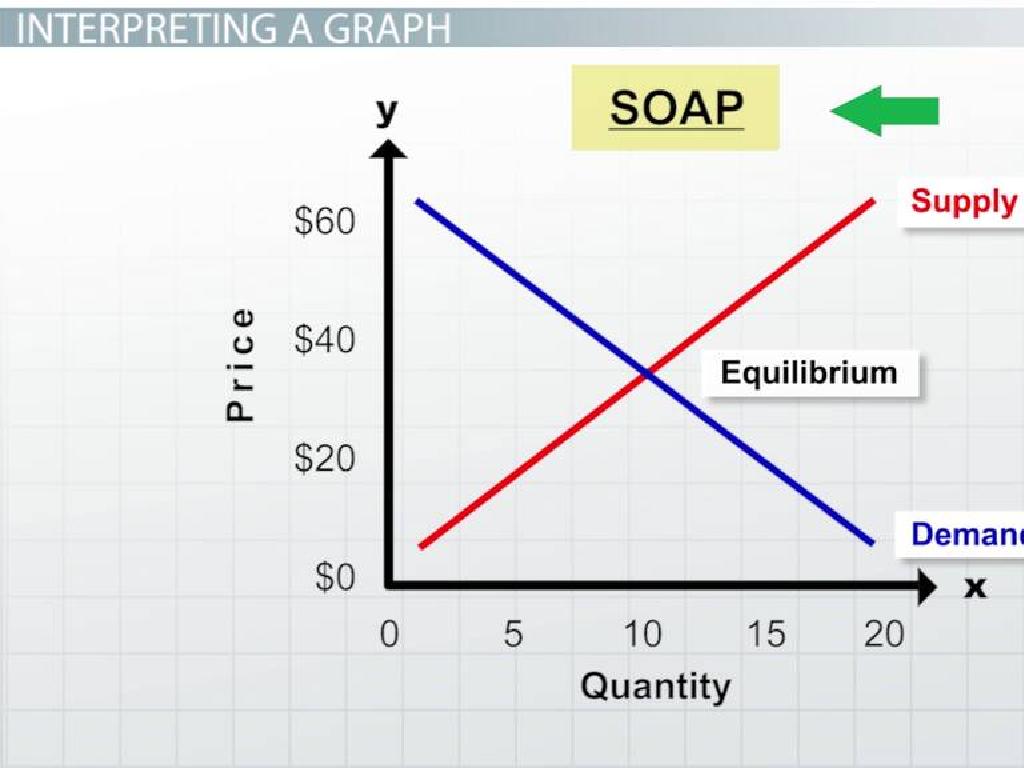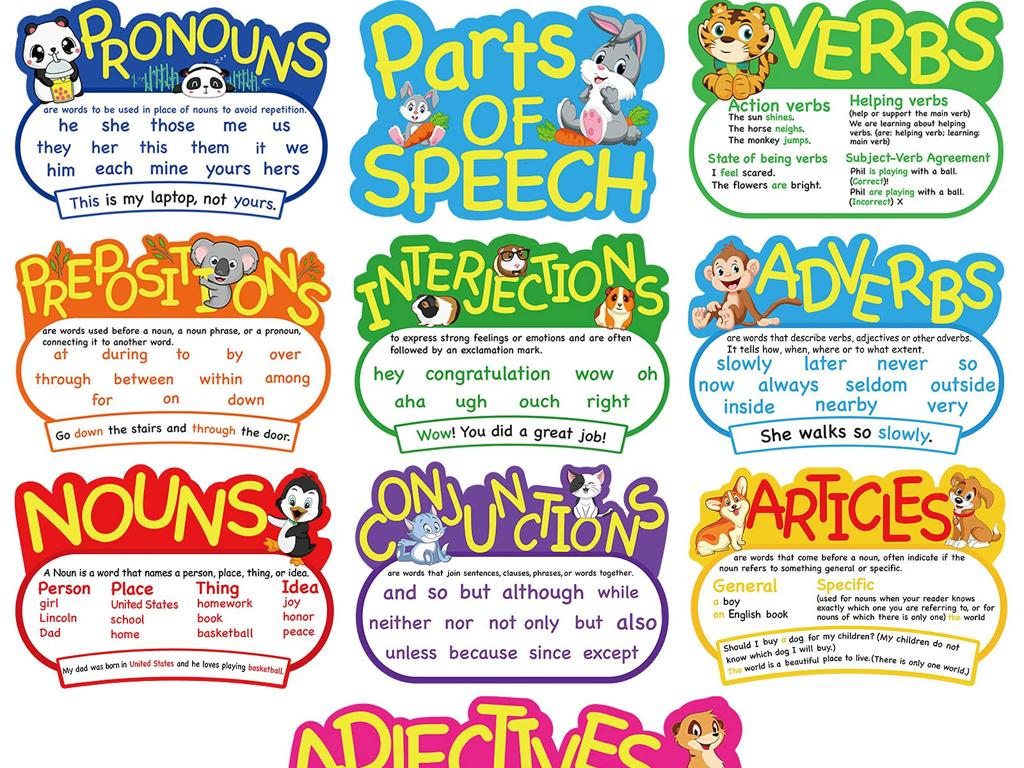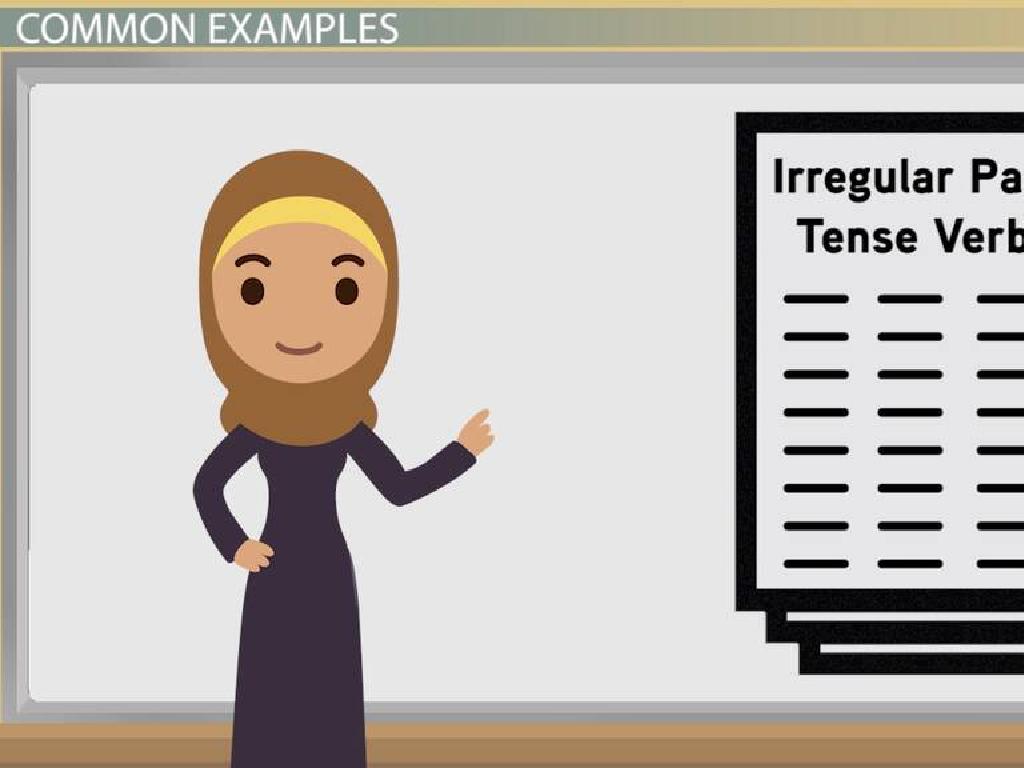Count Coins And Bills Word Problems - Up To $20 Bill
Subject: Math
Grade: Fourth grade
Topic: Money
Please LOG IN to download the presentation. Access is available to registered users only.
View More Content
Welcome to Money Math: Becoming Money Masters
– Learn the value of coins and bills
– Understand pennies, nickels, dimes, quarters, and bills
– Counting money up to $20
– Add different coins and bills to find total amounts
– Real-life money usage
– How to pay for things and make change
– Practice with word problems
– Solve problems involving purchases and making change
|
This slide introduces students to the practical aspects of money management. Start by explaining the value of different coins and bills, ensuring that students can recognize and value each type. Then, move on to counting exercises that involve combining coins and bills up to a $20 bill. Discuss real-life situations where they might need to use money, such as buying groceries or saving for a toy. Incorporate word problems that simulate these scenarios to help students apply their knowledge. Encourage them to think about how they use money in their daily lives and the importance of understanding money to make smart financial decisions. Provide examples of word problems and go through them together as a class.
Identifying Coins and Bills
– Review coin names and values
– Penny (1¢), Nickel (5¢), Dime (10¢), Quarter (25¢)
– Learn bill values: $1, $5, $10, $20
– Understand the look and worth of different bills
– Quick quiz on money identification
– Match coins/bills with their correct values
|
Begin the lesson by reviewing the names and values of coins, ensuring students can identify and differentiate between a penny, nickel, dime, and quarter. Then, introduce the values of bills, focusing on $1, $5, $10, and $20, and discuss their physical characteristics. Follow up with a quick quiz where students match the name of the coin or bill to its value. This activity will reinforce their understanding and help them prepare for more complex money calculations. For the quiz, prepare flashcards with coins/bills on one side and their values on the other. Encourage students to work in pairs or small groups to promote collaboration. Offer additional examples of each coin and bill to ensure familiarity.
Counting Coins and Bills
– Count same type coins
– Stack or line up coins to count multiples of the same value.
– Count mixed coins
– Add different coins by sorting and then adding values.
– Example: 3 dimes, 4 nickels, 2 quarters
– 3 dimes = 30 cents, 4 nickels = 20 cents, 2 quarters = 50 cents. Total = $1.00
– Practice with real-life scenarios
|
This slide introduces students to the concept of counting coins, an essential skill for managing money. Start by explaining how to count coins of the same type by stacking or lining them up and multiplying. Then, demonstrate how to count mixed coins by sorting them into groups by value before adding them together. Use the example provided to show how to count 3 dimes, 4 nickels, and 2 quarters, emphasizing the importance of knowing the value of each coin. Finally, encourage students to apply these skills by practicing with word problems that mimic real-life situations, such as calculating change or the total cost of items.
Counting Bills and Coins
– Organize bills from highest to lowest
– Start with the largest bill and go to the smallest
– Practice with varied bill combinations
– Mix different bills to practice counting
– Example: $10, 2x $5, 3x $1
– How much money is 1 ten-dollar bill, 2 five-dollar bills, and 3 one-dollar bills?
– Calculate total value of bills
– Add the value of all bills to find the total
|
This slide is aimed at teaching students the practical skill of counting money, specifically bills. Start by explaining the importance of organizing bills from highest to lowest before counting. This makes it easier to keep track of the total amount. Provide students with various combinations of bills to practice counting, ensuring they understand that different combinations can result in the same total. Use the example provided to illustrate how to count a combination of bills. Ask students to calculate the total value by adding the amounts together. Encourage them to check their work by recounting. In the next class, students can engage in hands-on activities with play money to reinforce these concepts.
Solving Word Problems with Coins
– Read a word problem aloud
– Determine coins for a set amount
– Identify and count coins like pennies, nickels, dimes, and quarters
– Example: Making 45 cents with nickels
– You need 9 nickels to make 45 cents (45 ÷ 5 = 9)
– Practice with different coin values
– Use various coins to make the same amount, like 20 cents with 2 dimes or 4 nickels
|
This slide is aimed at helping students understand how to solve word problems involving coins. Start by reading a problem together to ensure comprehension. Then, guide students to identify which coins can be used to make a specific amount of money. Use the example provided to show how to calculate the number of nickels needed to make 45 cents. Encourage students to think about different combinations of coins that can be used to reach the same total. In the next class, have students practice with various word problems and coin values to reinforce the concept.
Solving Money Word Problems
– Read a word problem aloud
– Determine bills for a total amount
– Example: Making $20 with $5 bills
– How many $5 bills are needed for $20?
– Practice with different bills
– Try using $1, $10, or $20 bills for practice
|
This slide is aimed at helping students understand how to solve word problems involving bills and money. Start by reading a word problem together to ensure comprehension. Guide students to identify which bills could be used to reach a given amount, emphasizing the importance of choosing the most efficient combination of bills. Use the example provided to illustrate the concept: to make $20 with $5 bills, we need four $5 bills. Encourage students to think critically about other ways to make $20 using different denominations, such as $1, $10, or $20 bills. This exercise will help them understand the value of each bill and improve their problem-solving skills. In the next class, students can share their solutions and discuss the various methods they used to reach the total amount.
Making Change with Money
– Calculate change from purchases
– Give the least coins/bills as change
– It’s efficient to give the smallest amount of coins/bills possible
– Example: Buying a $7.50 toy with $10
– Subtract the cost from what you paid: $10 – $7.50
– How much change do you get?
– Use subtraction to find the total change: $2.50
|
This slide introduces the concept of making change, a practical application of subtraction in financial literacy. Students will learn to calculate the difference between the cost of an item and the amount of money given to pay for it. Emphasize the importance of giving the least number of coins and bills to make the process quicker and easier. Use the example provided to walk through the steps of calculating change. Encourage students to practice with different scenarios and amounts, reinforcing their subtraction skills and understanding of money. This will prepare them for the next class activity where they will role-play buying and selling items to practice making change.
Class Activity: Money Scenarios
– Pair up for money word problems
– Use play coins and bills for practice
– Pretend to buy items with play money to understand real transactions
– Discuss solutions with the class
– Explain the reasoning behind your answers
– Share how you solved the problem and the strategy used
|
This activity is designed to help students apply their knowledge of counting money to real-life situations. By working in pairs, they can collaborate and discuss strategies for solving word problems that involve making purchases with coins and bills up to a $20 bill. Provide a variety of play coins and bills for students to use, and create scenarios where they have to calculate total costs, make change, or decide if they have enough money to buy certain items. After solving the problems, each pair will share their solutions and explain their thought process to the rest of the class. This will not only reinforce their understanding but also improve their communication and reasoning skills. Possible scenarios could include buying groceries, school supplies, or calculating the total cost of a meal at a restaurant. Encourage creativity and ensure that each pair has a different scenario to work on.
Money Math Mastery: Recap & Homework
– Review counting coins and bills
– Homework: Word problem worksheet
– Solve problems using skills learned today
– Practice is key in money math
– The more you practice, the better you’ll get at recognizing values and making change
– Keep learning and have fun!
|
As we conclude today’s lesson on counting coins and bills, it’s important to reinforce the skills learned. Go over the key points, such as identifying different coins and bills and their values, and how to add them up in various combinations. For homework, students are assigned a worksheet filled with word problems that require them to apply these skills. Emphasize that practicing these problems will help solidify their understanding of money math. Encourage them to approach the homework with a positive mindset, seeing it as an opportunity to become more confident in handling money. Remind them that it’s okay to make mistakes, as long as they learn from them. Offer additional resources or support for students who may need extra help.






